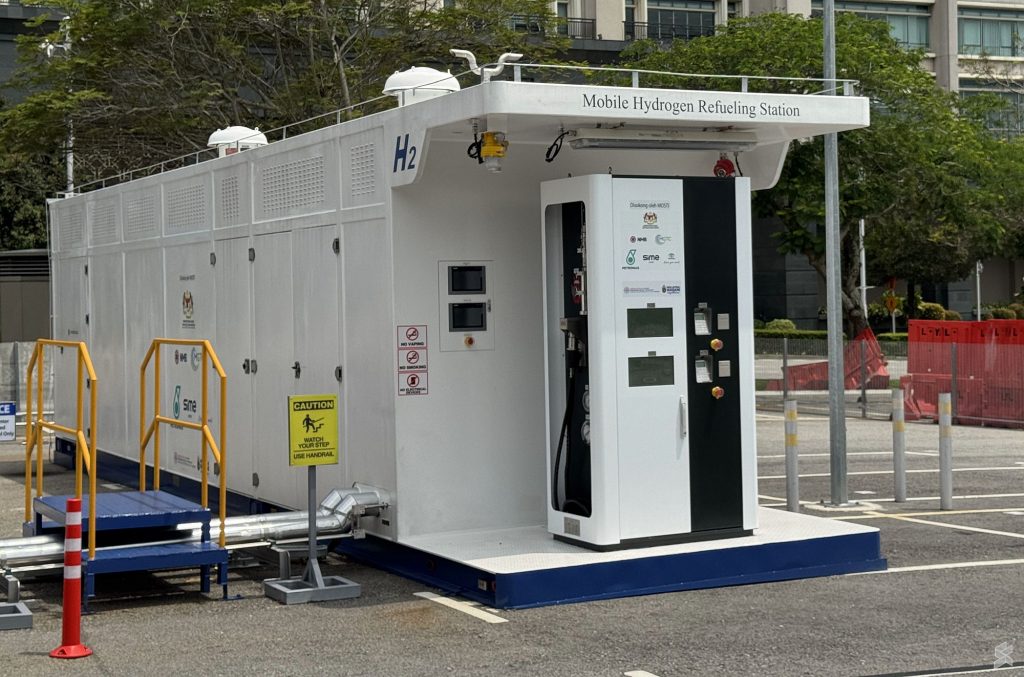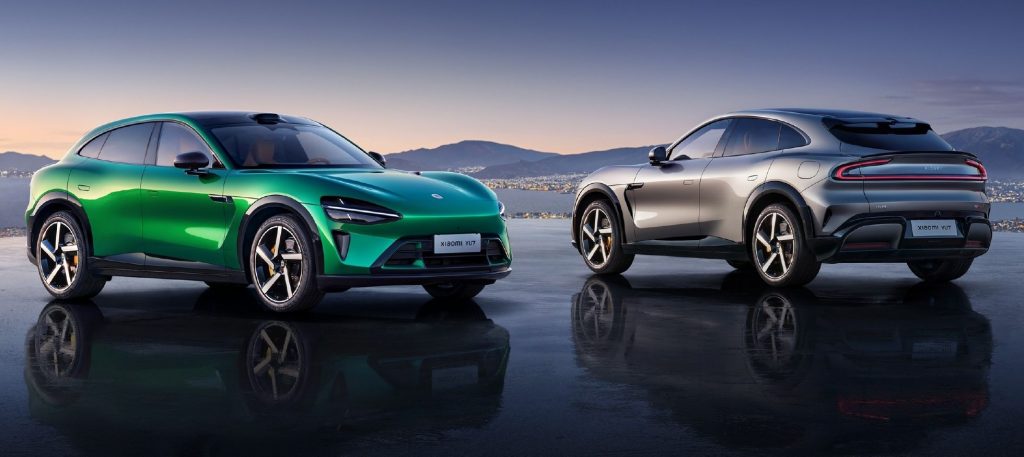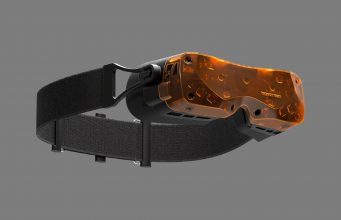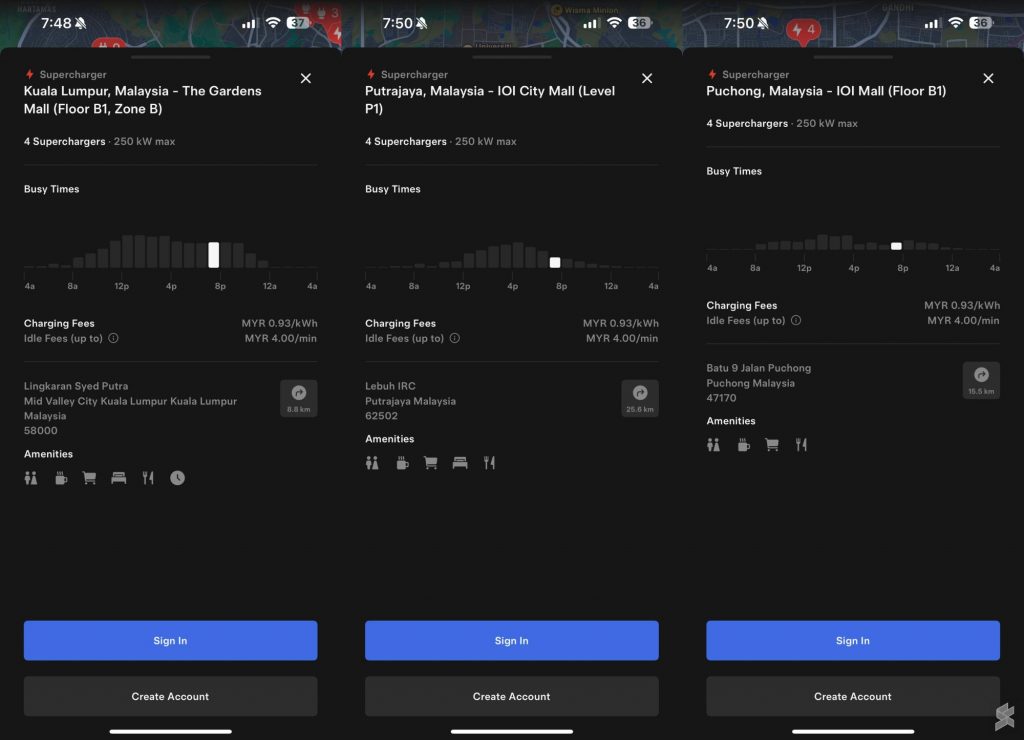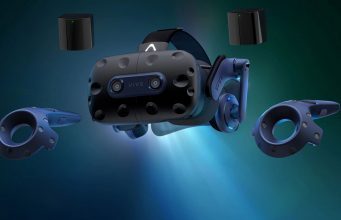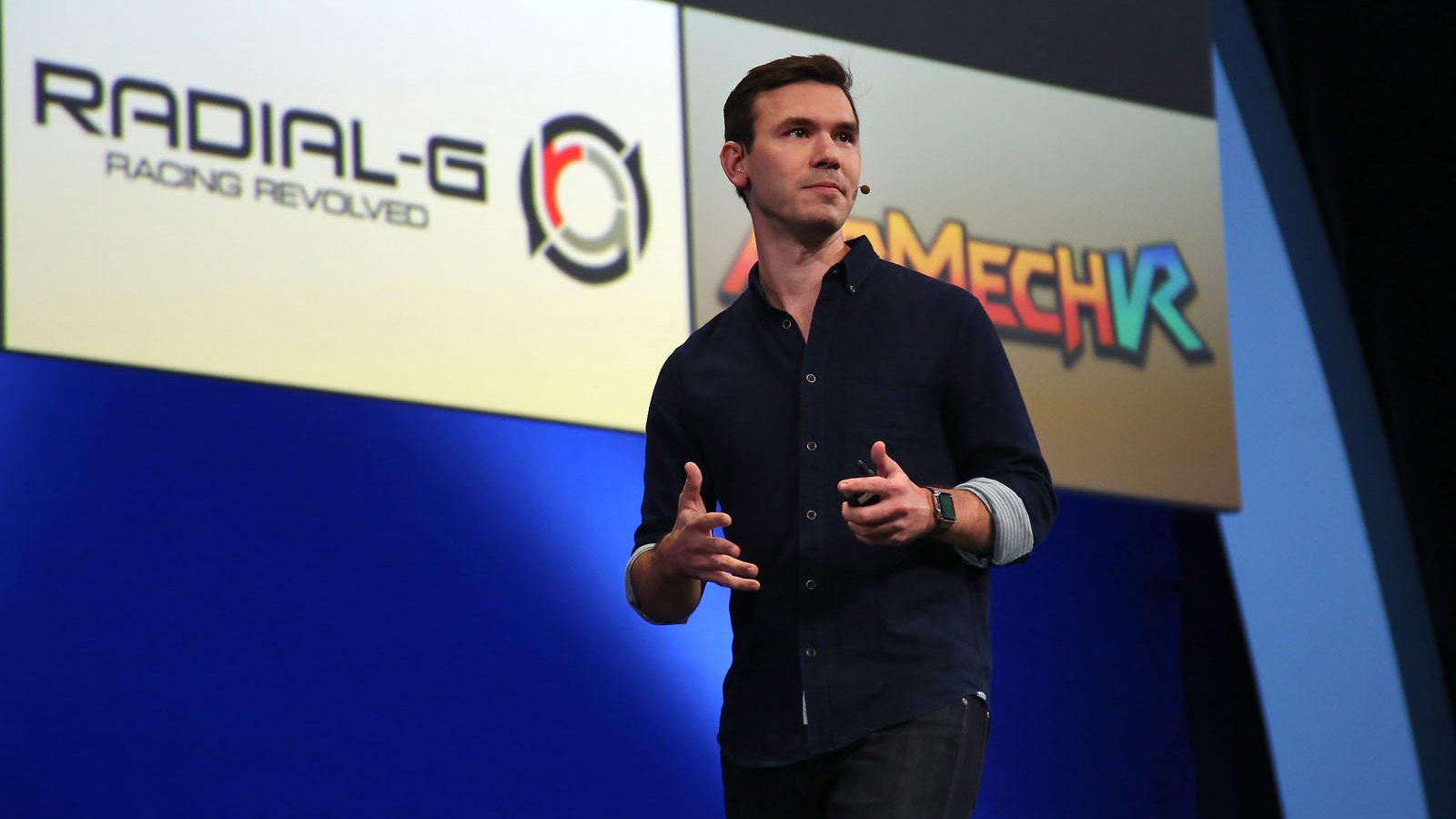Besides battery electric vehicles, the Malaysian government is also exploring hydrogen and fuel cell technology as part of its effort to achieve net zero carbon emissions by 2050.
The first step to promote the adoption of hydrogen FCEV in West Malaysia is to establish the basic infrastructure for refuelling. In contrast, Sarawak already has hydrogen refuelling stations, hydrogen-powered buses and trams. The East Malaysian state has been positioning itself as the region’s hydrogen hub with plans to start large-scale green hydrogen production and export by 2027.
As part of the plan to promote and drive innovation in hydrogen mobility, the Ministry of Science, Technology and Innovation (MOSTI) is introducing three Toyota Mirai Fuel Cell Electric Vehicles (FCEV) in West Malaysia and a mobile refuelling station located in Putrajaya.
Mobile Hydrogen Refuelling Station to stimulate hydrogen mobility sector
Last Friday, the Ministry launched the first Mobile Hydrogen Refuelling Station (MHRS) located at ab open air carpark in Presint 2, Putrajaya. The hydrogen mobility pilot project costs RM15 million and the station supplied by Hydrexia Sdn Bhd (Hydrexia) is said to be capable of supplying 50kg of hydrogen daily through the small-scale station.
The project is supported by MOSTI through the National Nanotechnology Centre (NNC) and NanoMalaysia Berhad (NMB), in collaboration with Petronas Technology Ventures Sdn Bhd (PTVSB), Sime UMW, UMW Toyota Motor Sdn Bhd (UMWT) and the Malaysian Green Technology and Climate Change Corporation (MGTC).
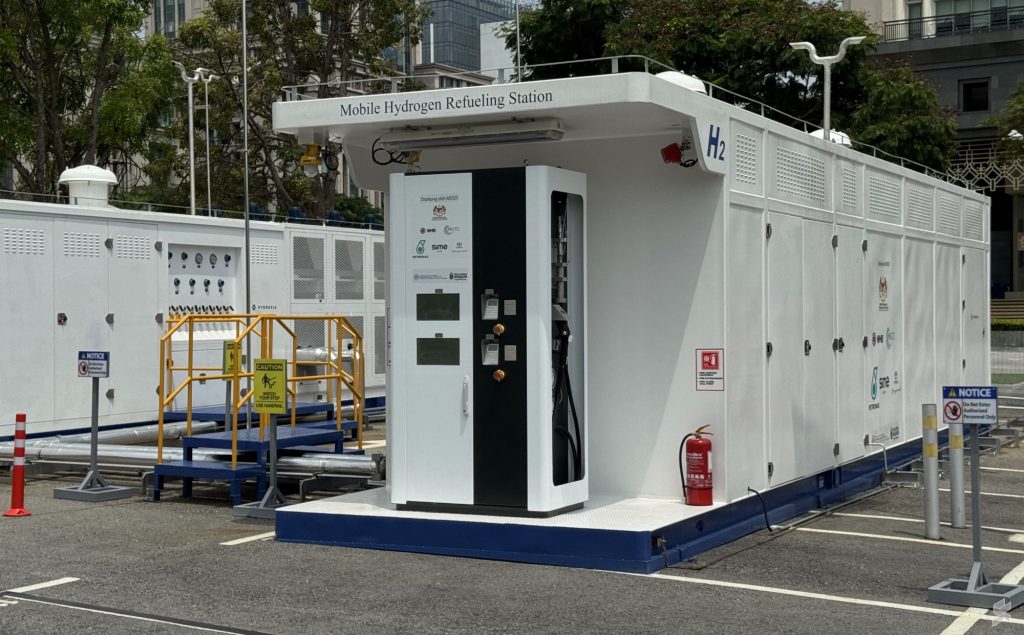
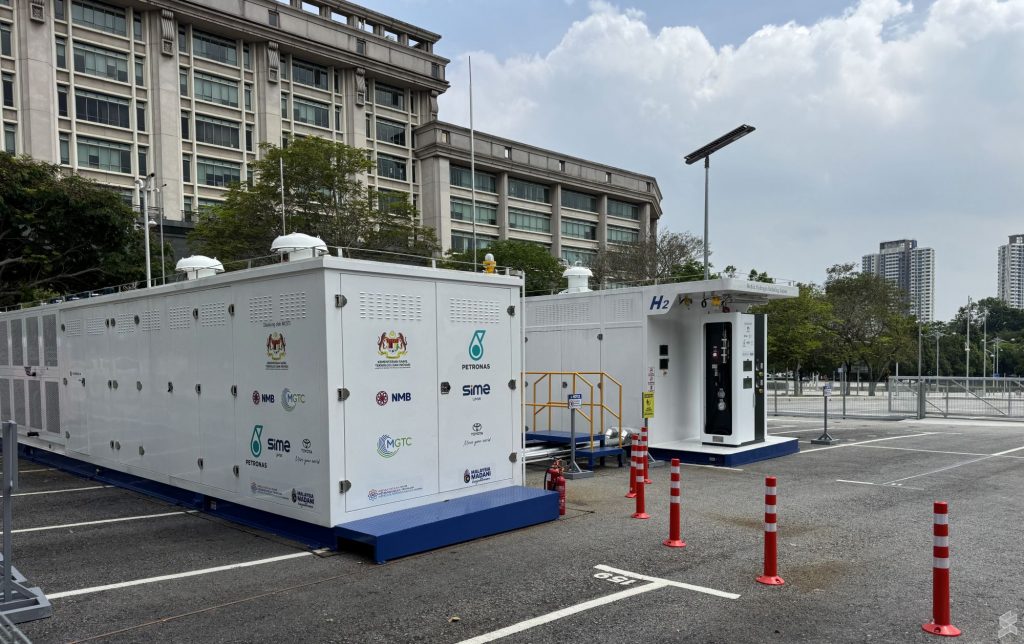
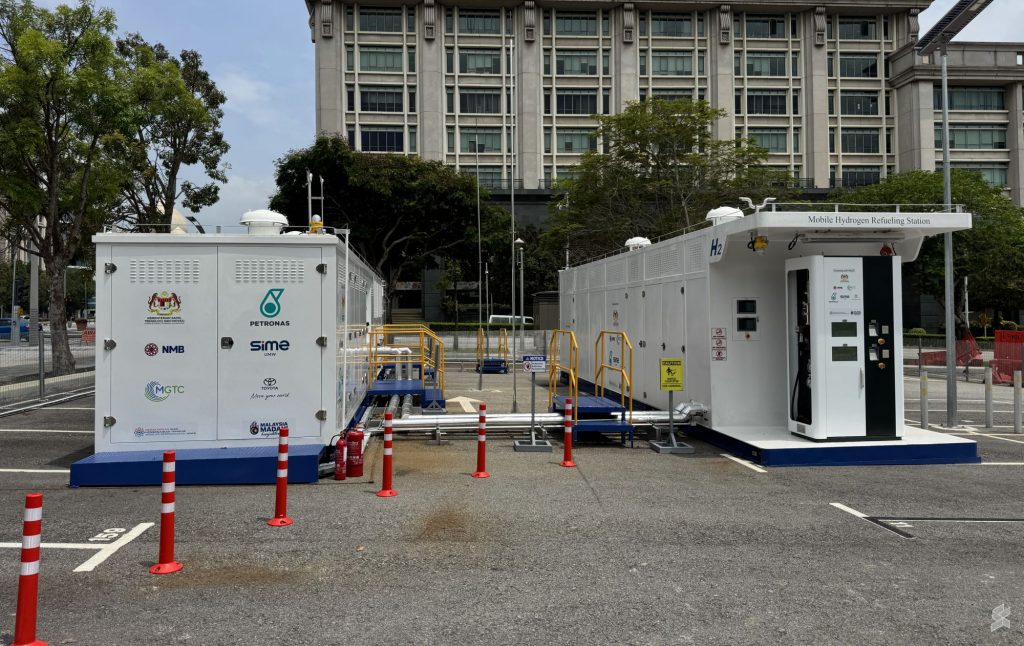
NMB will represent MOSTI as the asset administrator, with the role of operator of the hydrogen refuelling station and test site for new technologies to explore long-term commercial opportunities. Meanwhile, PTVSB supplies the hydrogen and oversees the station’s engineering, procurement, construction and commissioning (EPCC) works of the station.
The three Toyota Mirai FCEVs and its maintenance are supplied and handled by Sime UMW and UMWT. MGTC will conduct feasibility studies on the use of the FCEVs on local roads with data support from UMWT and Hydrexia.
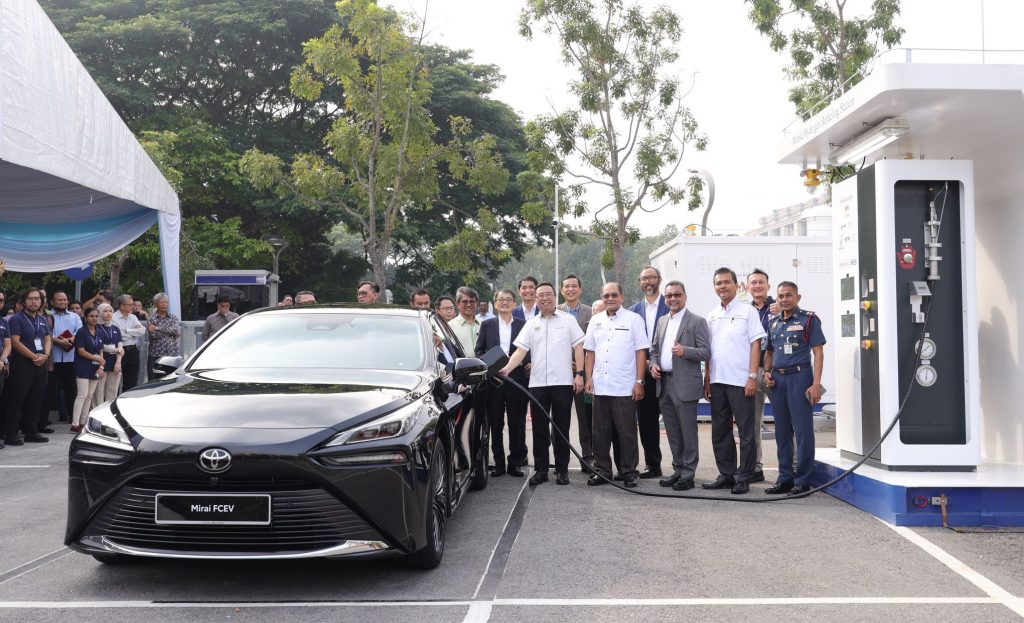
According to the MOSTI, the launch of the MHRS project will be a catalyst to increase industry engagement, attracting investors, stakeholders and industry players to participate in the development of Malaysia’s hydrogen ecosystem.
It added that the global hydrogen market is expected to grow rapidly in the coming decades and the project will position Malaysia at the forefront of the hydrogen economy. The small-scall hydrogen refuelling station market is forecasted to exceed USD 7.3 million by 2034 and the project is said to pave the way for growth, investment and innovation in Malaysia’s green energy sector.
Minister for Science, Technology and Innovation Chang Lih Kang also shared that besides the three Mirai FCEV, there will be two hydrogen buses which are converted from internal combustion engines.
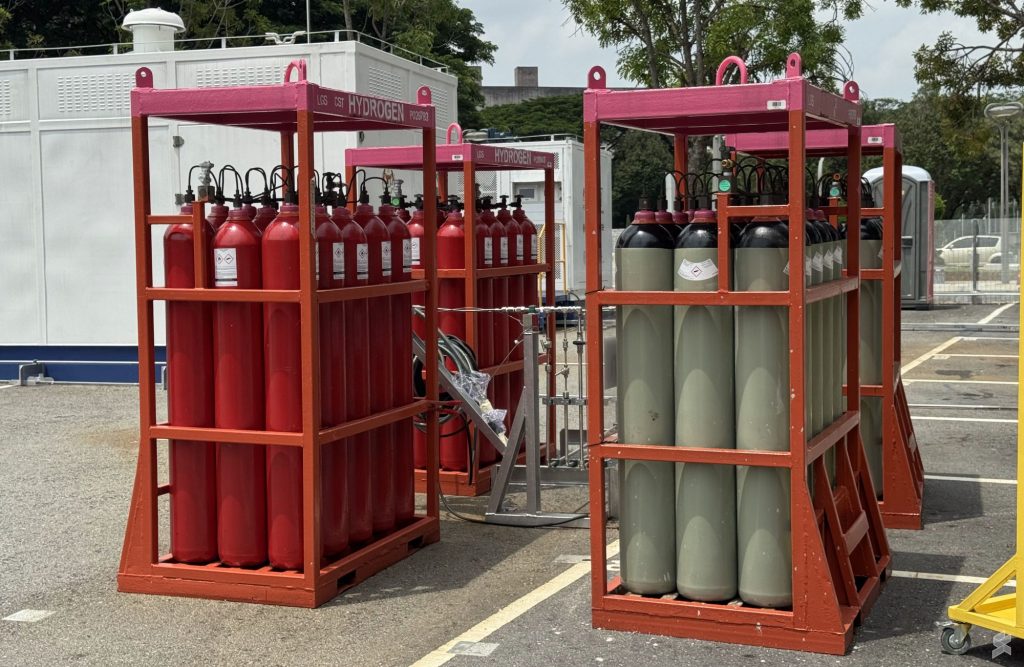
From we can see on-site are two large container structures along with canisters of Hydrogen and Nitrogen. According to Paultan, the first container houses a compressor (90MPa) and chillers for the dispenser, while the second container houses two storage containers (50MPa and 90MPa).
The hydrogen dispenser at Putrajaya is equipped with two nozzles – H35 and H70. Passenger FCEVs such as the Mirai uses the H70 (70MPa / 700bar) nozzle, while other vehicles such as buses typically use H35 (35MPa / 350 bar).
So far there’s no pricing for the hydrogen at the location and the mobile refuelling station itself is being fenced up in the paid parking area.
Are Hydrogen FCEV cars the future?
Whenever there’s a discussion about EVs, there are always comments that Hydrogen cars are the future as they are cleaner and it only takes 5 minutes to pump a full tank. The only thing that comes out is just water. Essentially, you can live with a hydrogen car the same way as owning a petrol or diesel vehicle.
However, the reality is that FCEVs for consumer use aren’t as rosy as they are perceived to be.
The biggest hurdle is the infrastructure to provide hydrogen, and supplying hydrogen to the pump isn’t the same as delivering petrol or diesel to your local petrol station.
Clean Hydrogen production is very energy intensive
Although Hydrogen is the most abundant element in the universe, it hardly exists in its pure form (H2) as it’s usually binds to other elements such as water (H2O) or methane (CH4). There are many ways to produce H2 and the cleanest option is Green Hydrogen which uses electrolyser powered using renewable energy such as solar, wind or hydro.
This is where Sarawak has the advantage for green hydrogen production as the state has abundance of water and clean energy from its Hydroelectric dams in Bakun, Murum and Batang Ai. Collectively, Sarawak’s large hydro plants have a total capacity of 3,558MW, which is 62% of the total available capacity in the state.
To produce green hydrogen, the electrolyser splits water (H2O) molecules to Hydrogen (H2) and Oxygen (O2). The process itself is very energy intensive and requires 50-55kWh of electricity to produce 1kg of hydrogen.
Energy required to generate clean hydrogen for Mirai can fully charge Proton e.MAS 7 four times!
The Toyota Mirai’s full tank capacity is 5.6kg and it is rated to provide about 650km of mileage. Assuming the Mirai needs 5kg of hydrogen, you’ll need about 275kWh of electrical energy to produce the required hydrogen.
With the same 275kWh of energy, you can fully charge a BYD Seal (82.5kWh) and Tesla Model 3 LR (75kWh) more than 3 times, or a Proton e.MAS 7 Premium (60kWh) more than 4 times. This excludes other factors including transporting the hydrogen itself to the refuelling station.

Besides the energy required to produce green hydrogen, the overall efficiency for FCEV is much lower than electric vehicles. There are energy loses during storage and further loses when the hydrogen is converted back to electricity to power up the electric motor.
As shown above, direct electrification is still the most efficient by far.
There are cheap and dirty hydrogens
There are of course cheaper ways to produce hydrogen but it involves fossil fuels. Grey Hydrogen is currently the cheapest and it is produced using natural gas via steam methane reforming (SMR). However, this method emits significant amounts of greenhouse gas emissions that you’re better off sticking to petrol and diesel cars.
The next option is Blue Hydrogen, which is slightly better as it is similar to Grey Hydrogen but with carbon capture and storage (CCS). With CCS, the supposed CO2 produced is captured and stored underground to reduce greenhouse gas emissions. However CCS itself is also energy intensive and very costly.
The dirtiest option is Brown and Black Hydrogen which are produced via coal gasification. However, the cost varies depending on the price of coal.
Currently, 95% of hydrogen produced worldwide are grey hydrogen which isn’t clean. If Malaysia wants to push hydrogen as a clean option, it needs to be focusing on green hydrogen production with renewable sources.
Of course, electric vehicles are only as clean as their power source. However, the good thing is that electricity can be produced from various renewable sources including solar and hydropower. In West Malaysia, TNB eventually is making their grid cleaner as they are phasing out coal-fired generations in stages with the aim to eliminate coal operations by 2050.
If you have solar at home, you are practically using 100% renewable energy to charge your vehicle with a wallbox charger. On top of that, EVs can be charged practically anywhere as long as there’s a power supply. That includes your office, mall, hotels and even at home.
High cost to refuel and costly infrastructure
Whether it is petrol, electric or hydrogen, consumers will pick the most cost efficient mobility option. At the moment, the prices of hydrogen is very expensive and it costs over USD 30 per kg (about RM130) in the US. That’s over USD150 (about RM650) to fill up the Mirai.
FCEV vehicles are also expensive and sales have been declining as electric vehicles rise as the preferred option. In 2024, it was reported that only 1,778 Toyota Mirai were sold worldwide for the full year. As a comparison, over 1,800 Proton e.MAS 7 EVs were delivered in Malaysia in just 3 months.
In order to get more people to buy their FCEV in the US, Toyota is currently offering a massive 70% discount from USD 51,285 to USD 17,005 (From RM221,700 to RM73,505). That’s like a Toyota Camry discounted to the price of a base spec Yaris. On top of that, Toyota is even offering USD15,000 (about RM64,837) worth of free Hydrogen fuel valid for 6 months.
The next challenge is accessibility to refuelling stations. As we’ve mentioned earlier, the infrastructure is very costly and the deployment has to grow in tandem with adoption to ensure viability.
Due to rising cost and lack of demand, many operators in Austria, Germany, the UK and the US are shutting down their hydrogen refuelling stations.
It was reported that only 125 new hydrogen stations were opened worldwide in 2024 and there’s a total of 1,160 refuelling stations still operating by end of 2024. That’s a small faction compared to the number of EV charge points deployed so far.
As documented by The Verge during their hydrogen road trip with the Toyota Mirai, there were only about 50 Hydrogen stations along the California “Hydrogen Highway”. The video is a must watch to see what has happening on the ground despite heavy government support to increase Hydrogen adoption.
Potential of Hydrogen use in other mobility sectors
While FCEVs face challenges for mass adoption, there are other sectors where hydrogen technology makes more sense. This includes buses, commercial vehicles and aviation where hydrogen currently offers more advantage than BEVs. This is also provided green hydrogen can be produced at scale and at a more cost efficient manner.
A hydrogen tank has higher energy density than batteries, and this translates to longer range and they are also faster to refill.
As a comparison, a fully-electric Volvo FM Prime Mover can be configured with up to six battery packs that offers 540kWh capacity but it only provides up to 300km of range when fully loaded. Battery packs are extremely heavy and it takes 2.5 hours to fully charge the battery with a 250kW DC fast charger.

In comparison, a Hyundai XCIENT Fuel Cell Truck with a 68.6kg Hydrogen tank and a smaller 72kWh battery pack is capable of delivering double the range, of up to 450 miles (724km) when fully loaded. This solution features two 90kW Fuel Cell Stack and the motor pushes 350kW (469hp) of power.
Instead of waiting for hours to charge, the Hyundai FCEV truck takes less than 20 minutes to fill up the 68.6kg hydrogen tank. Unlike passenger FCEVs which requires a wide network of hydrogen stations nationwide, the infrastructure for FCEV trucks and buses can be centralised around industrial hubs, depots and ports.
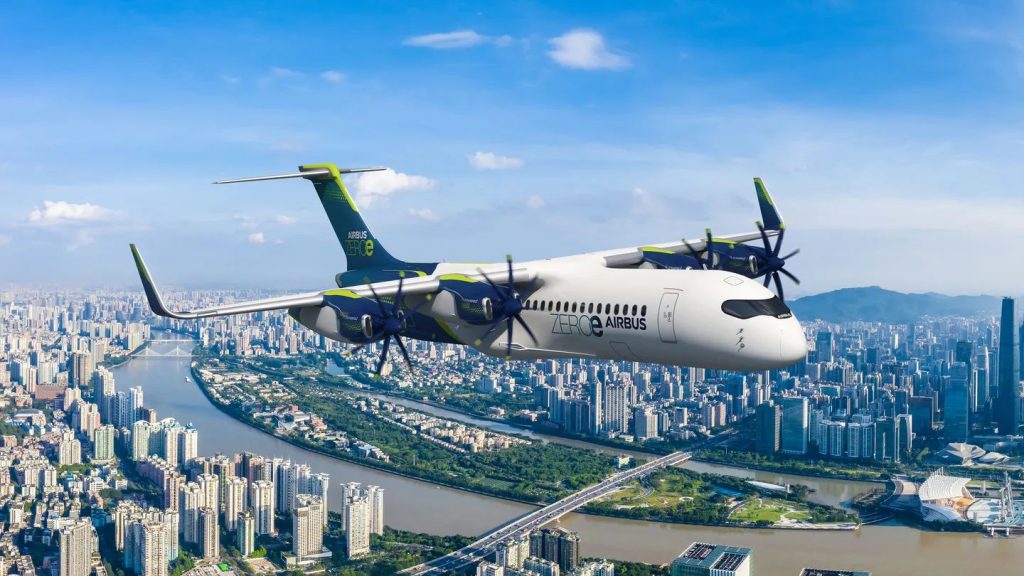
Even Airbus is working on hydrogen fuel cell technology for its upcoming future aircraft under its ZEROe project. As announced recently, it aims to introduce its fuel-cell powered single-aisle aircraft with a target to enter service in the second half of the 2030s. As shown above, the hydrogen aircraft will be powered by four 2MW electric propulsion engines and each are powered by a full cell system with two liquid hydrogen tanks.
